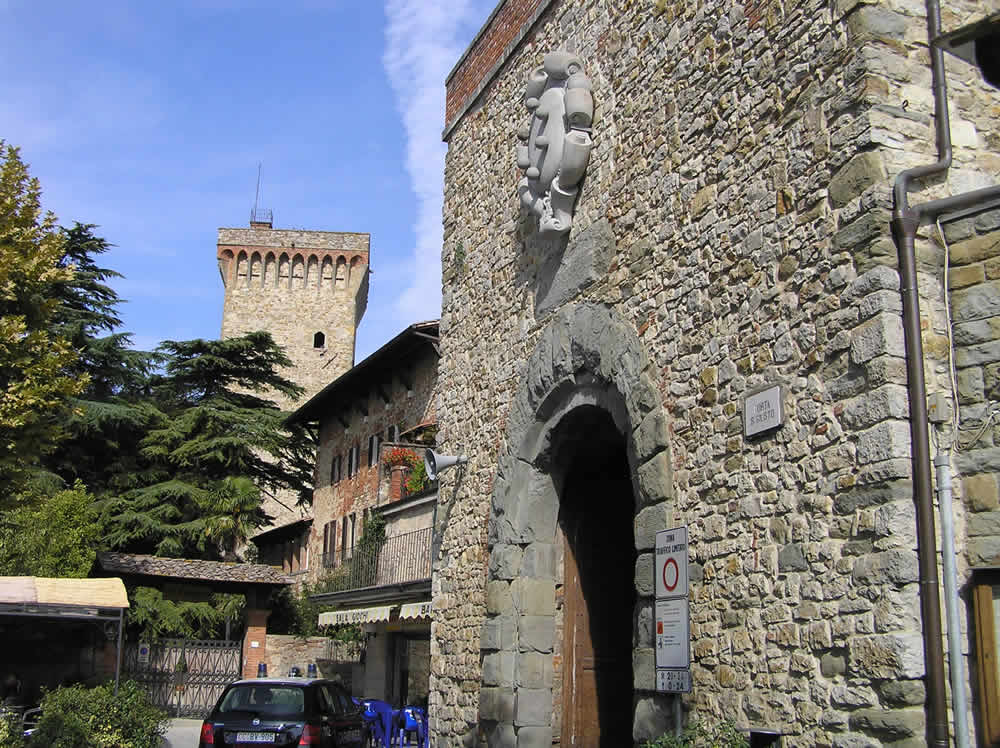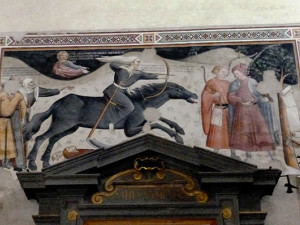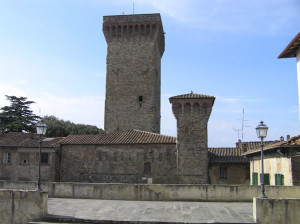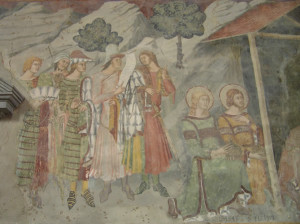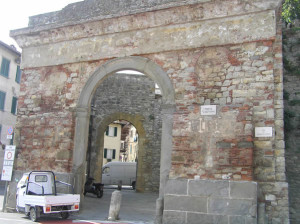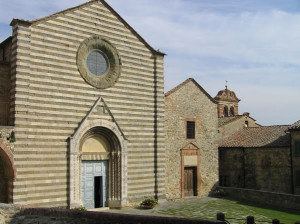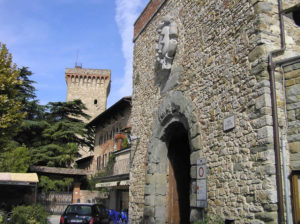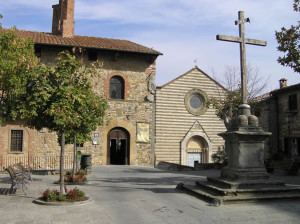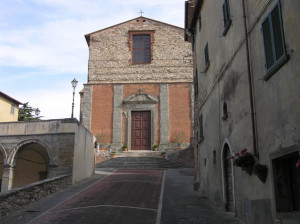Questo articolo è disponibile anche in:
![]() Français
Français ![]() Deutsch
Deutsch ![]() Español
Español ![]() Italiano
Italiano
Lucignano (3,500 inhabitants), is a small medieval village of the Val di Chiana, located about 400 meters above sea level, in the province of Arezzo, from which is 33 km away. The origin of Lucignano probably dates from the period of the Roman Empire, when the top of the hill where today the country there was a “castrum” that controlled the transit along the road connecting Siena Arezzo. The current village developed between the twelfth and fourteenth century, and was often disputed between Arezzo and Perugia. In the fourteenth century it became part of the Republic of Siena, that in 1371 encircled the village by walls and erected a fortress. In 1554 Lucignano became a Florentine possession becoming part of the Grand Duchy of Tuscany.
A SPLENDID MEDIEVAL VILLAGE
The current village retains almost intact its medieval appearance, the village has an oval plan and is still partly surrounded by walls. On the walls there are three doors all built in 1371: Porta San Giusto, Porta San Giovanni and Porta Murata. Two streets characterize the village: to the south via Matteotti (via Ricca) wide and rich in precious Renaissance palaces, to the north via Roma (via Povera) of medieval appearance and with the poorest and most popular buildings. The main square of the village is the square where stand the Cassero (piazza Caduti della Libertà), here in addition to the Cassero of the fourteenth century are a nice porch and, at the top, at the apex of a beautiful elliptical staircase the Collegiate Church of San Michele Arcangelo of the late sixteenth century.
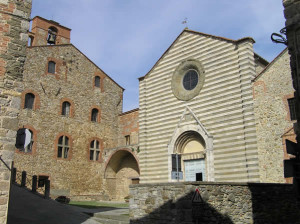
THE MUNICIPAL MUSEUM
Besides the Collegiate is the piazza del Tribunale with the Town Hall of the fourteenth century, inside are the Municipal Museum (Museo Comunale) and the Sala Consiliare decorated with frescoes dating back to the early nineteenth century. In the Municipal Museum are located the main works of art of the village, the exhibition is divided into four rooms where there are valuable works of art, including a thirteenth-century panel of the Crucifixion by an unknown author, a triptych by Bartolo di Fredi from the end of XIV century representing the Madonna and Child Enthroned with Saints. Among the most important works the tablet by Lippo Vanni (XIV century) depicting the Madonna and Child Enthroned with Saints.
Another interesting work is the lunette by Luca Signorelli (early sixteenth century) representing St. Francis receiving the stigmata. But the most important work of the museum is located in the hall of the Court (Sala del Tribunale) or the Chancellery (Cancelleria) and is the magnificent reliquary in the form of tree called the Tree of Lucignano (also Tree of Life, or Golden Tree), a work of art in copper gold, silver and coral dating from the fourteenth and fifteenth centuries. The Sala del Tribunale has a series of frescoes on the walls and on the ceiling made in the fifteenth century.
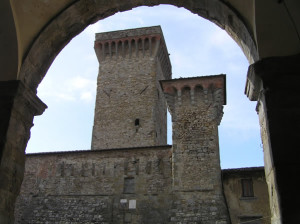
OTHER CHURCHES
To the right of the Town Hall is the beautiful Romanesque church of San Francesco (XIII century) with inside frescoes by Taddeo di Bartolo and Bartolo di Fredi of the fourteenth and fifteenth centuries.
Near the church of San Francesco is also the church of the Santissima Annunziata or of Misericordia (late sixteenth century), decorated in the Renaissance style.
Outside the medieval town are the unfinished remains of the Medici Fortress and the Sanctuary of the late Renaissance of Madonna della Querce of the second half of the sixteenth century and whose design is attributed to Giorgio Vasari.
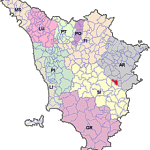
USEFUL INFORMATION:
Weekly market in Lucignano: Thursday morning
Via Matteotti
Tourist Office and Museum of Lucignano
- Hours: Winter hours (winter time): Friday – Saturday – Sunday 10:00 to 13:00 / 14:30 to 17:30
- Summer time (DST): Thursday – Friday – Saturday – Sunday 10:30 to 13:00 / 14:30 to 18:00
- Opened in midweek holidays and bridges. Possibility of extended opening hours by appointment for groups over 15 people.
Tickets
- Full price: € 5.00. Reduced Museum Friend *: € 4. Reduced standard **: 3,00 €
- Cumulative with Tower Marciano: Adults: 6,50 €. Reduced **: 5,00 €.
*For those who present a receipt for a purchase of more than 10 € at affiliated merchants and restaurateurs. ** Students under 18, over 65, Touring Club members, groups over 15 persons.
BIBLIOGRAPHY
- AA. VV. “Toscana” Guide Rosse Touring Club Italiano, 2007
- Spadini Valeriano; Spadini Chiara “Lucignano. Storia, arte, tradizioni” Aska Edizioni, 2011
- Tenucci Giovanni “Val di Chiana. Castiglion Fiorentino, Civitella in Val di Chiana, Cortona, Foiano della Chiana, Lucignano, Marciano della Chiana, Monte San Savino” Aska Edizioni, 2003
Questo articolo è disponibile anche in:
![]() Français
Français ![]() Deutsch
Deutsch ![]() Español
Español ![]() Italiano
Italiano

